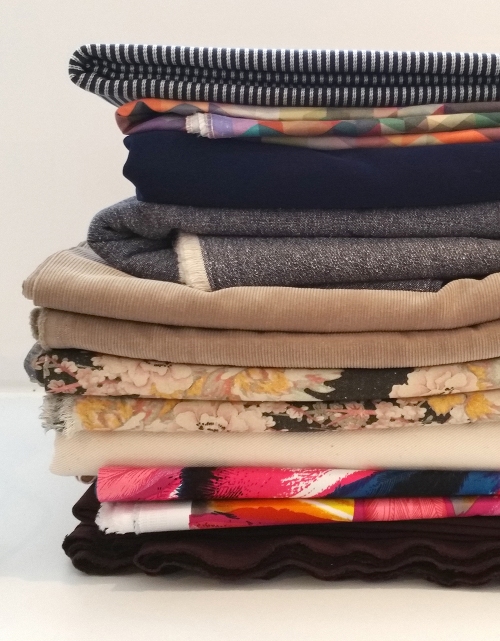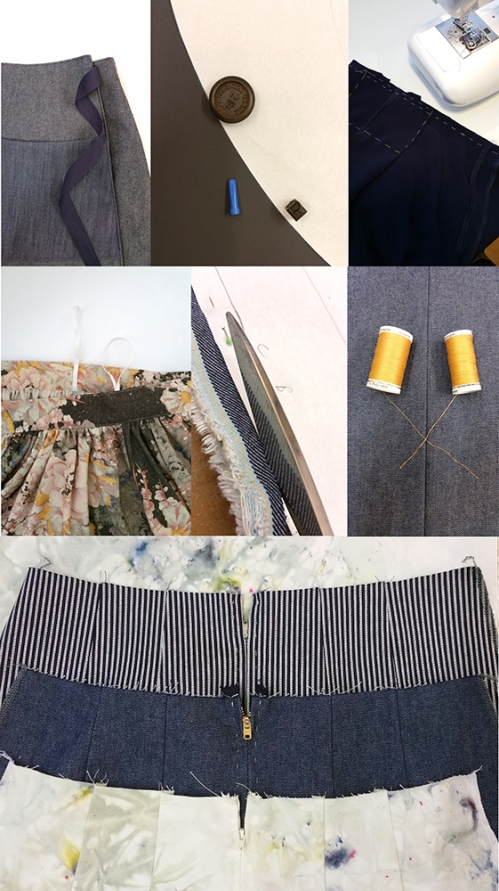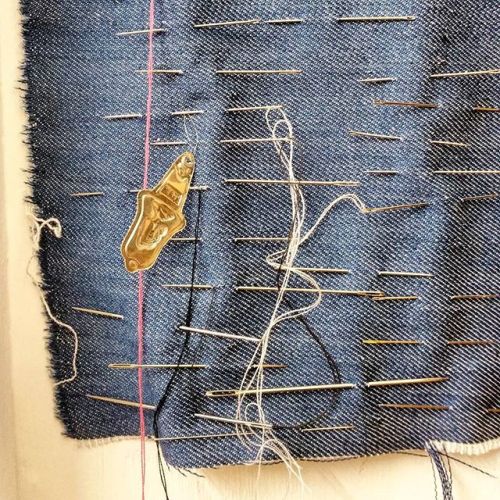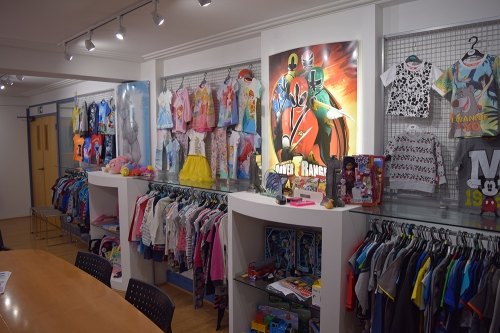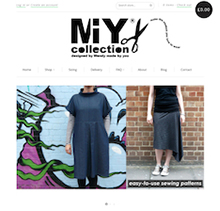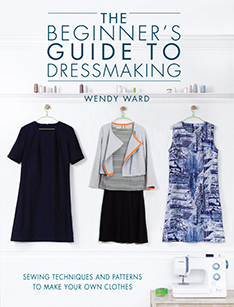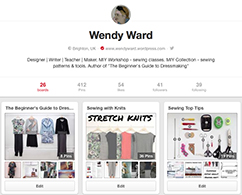Tag Archives: Love Sewing magazine
Find me in all these sewing magazines this month!
I’m embarassingly all over the sewing magazines this month, I’m afraid there’s no escaping me!
Inspiration For Your Entries to my Skirt Book Competition
Beginner’s Guide to Making Skirts Competition
Posted in Beginner's Guide to Making Skirts, Books by Wendy, Competitions, Sewing Patterns by Wendy, Social Media
Tagged beginners guide to skirts, beyond measure, ditto fabric, dressmaking competition, ernest wright & son, faberwood fabric, janome, Love Sewing magazine, miy skirts, sewing compeition, textile garden, win a sewing machine
What is it Like to Write a Sewing Book?
My “Behind the Seams” column in this month’s Love Sewing magazine is all about what it’s like to write a sewing book! Here’s a longer version of the article along with interviews with some of the fabulous people I got to work with on the book.
My new book “A Beginner’s Guide to Making Skirts” is out next month and credit for this month’s column must go to editor Amy, who said to me a few months ago; “I hope you’ll be writing about what it’s like to write a sewing book for your column?” What a great idea, why didn’t I think of that?! I guess that’s why she’s the editor!
So, the whole thing began with an email from Cico when I came back from holiday last year. Once I’d written a detailed proposal for the book including a contents list, research about why the book should exist, who it was aimed at and some design ideas it was finally commissioned in October 2015. That might sound like a lot of work to do before I knew if the book would even be commissioned, but all that preparation and planning was invaluable – it was then full steam ahead and I had until early December to complete the first 3 projects.
Although most readers might think of the author as the main person in the production of a book, it’s the combined effort of a tight team of people. I think trust is one of the key elements in the production of a book, especially craft books that are so reliant on imagery. Soon after commissioning I went to meet with the Cico team where we discussed the overall look and style of the book. We all brought along ideas independently to illustrate how we envisioned the book would look and it was such a relief to see we were all on the same wavelength! As an author it’s incredibly important to me for my books to reflect my style and be identifiable as my work, but likewise it’s important for the publisher to produce a book that fits in with their look and style in a way that they think will sell.
Once an overall style had been agreed, the fun could begin and what always happens at the start of every dressmaking project……fabric shopping!
I am lucky to know some fabulous fabric people and bought most of the fabrics for my samples from Gill at Ditto and Fiona at Faberwood. The remainder consisted of some bits from my stash and I was also super-excited to work with my good friend Ce of The Uncommon Thread on some experiments in hand dyeing fabric, meaning there are some really unique samples in this book.
Then began the sampling, those wonderful hours spent in MIY Workshop on my own listening to the radio, drafting patterns and cutting up fabric to turn my designs into reality. There are 8 projects in the book each with 3 variations – that’s 24 skirts I needed to make, not including the rough initial toiles I made to check and tweak my patterns.
While doing this I was writing the step-by-step instructions at the same time. That’s always how I work, I like to make notes right then and there while I’m sewing. I’ve found that way I remember the little quirks and the things that might catch people out. All the time I’m approaching my making with the mindset of “What’s the best way to explain this? What are the things about this that someone without much experience will find difficult?” That’s when I’m really drawing on all of my teaching experience. As far as I’m concerned it’s the single best tool for writing clear instructions. If you haven’t witnessed a complete beginner hopelessly muddled by a pattern they can’t figure out, then you’re going to struggle to imagine yourself in their shoes when you’re writing instructions that you want them to be able to follow.
Next came the photoshoots, 3 of them, one in December, one in March and the last in April. I made 9 samples for each of the first 2 shoots and 6 for the last one. Part of the joy of photoshoots is working with other creative professionals. They’re long tiring days and so much easier if you’re all on the same wavelength and can work well together. Lucky for me I had a wonderful team; 2 great models in Lucy and Rachel, a fabulous (and hilarious) stylist in Rob, Julian the talented photographer who also shot my first book and Anna my editor from Cico who did a great job of looking after us all. Sadly my dogs didn’t get their mutts into this book as we shot in studios in London.
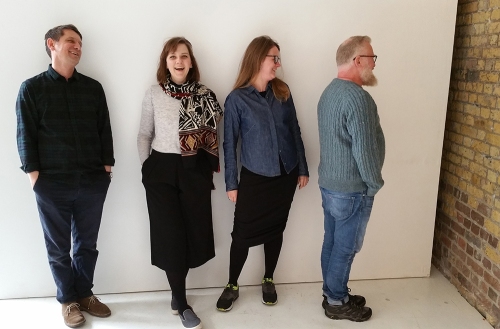 Photoshoot dreamteam L to R: Julian (photographer), Anna (editor), me, Rob (stylist).
Photoshoot dreamteam L to R: Julian (photographer), Anna (editor), me, Rob (stylist).
Once the projects were finished and photographed, the techniques section of the book needed to be written up and illustrated. As well as the text I also did all the diagrams for this book.
I wrote over 20,000 words and drew over 300 illustrations, at the same time I had also been checking the editing of the project instructions. Editors who work on craft books have to be such sticklers for detail, I love working with people like that, who just won’t let the slightest little thing get past them. Sarah, my editor for this book was just that and although we never met, I feel like I know her well from the many conversations we’ve had about seemingly small details at odd hours of the day and evening (one of which was the day before Christmas Eve). Yep, dedication, that’s what you need!
I love the creative process of designing new patterns and making samples. I even enjoy the nitty gritty of finding the clearest ways to explain how to make things. I find it a really satisfying combination of creativity, problem-solving and attention to detail. Writing a book is a wonderful thing to do. Being able to devote lots of time to creative new projects and working with a talented team of experts to bring it all together is immensely satisfying. Don’t get me wrong though, to write a book alongside running a business full-time is difficult; I spent a good 6 months while writing this book often working over 60 hours a week without a day off and the rest of my life outside of work had to go on hold, so it obviously isn’t for everyone. Nor is it a guaranteed way to earn your fortune, in these days of free everything, it’s difficult for publishers (and so authors) to turn a profit, but the satisfaction of seeing my books on the shelves of bookshops, in the hands of makers and to see the wonderful things that readers make from them, well, that’s a feeling that money can’t really buy.
Here’s a bit more about some of those fantastic people who also worked hard to make this new book a reality:
Anna Galkina
Wendy: What’s your current job title?
Anna: Editor at CICO Books.
How long have you worked in publishing?
6 years.
What was your first job in the industry?
I was the personal assistant to the publisher of CICO Books (Cindy Richards).
Where and what did you study?
Fine Art Drawing BA at Camberwell College of Arts in London.
What has been your proudest moment in publishing?
When I see the books I have worked on in bookshops, that’s always a great feeling.
Has there been a project that’s been your favourite to work on?
Apart from your book?! One of the authors I work with a lot – Clare Youngs – is so innovative and always comes up with such beautiful work. I also loved working on ‘My First Dog Book’ written by the brilliant Dawn Bates as I am a bit obsessed with dogs!
What do you enjoy most about being an editor?
I like the feeling of everything coming together, it’s very satisfying to see a book grow from just talking about an idea to becoming a physical object. I also enjoy the visual element of working where I do, as all the books are illustrated.
What do you enjoy least?
Trying to keep to schedules… I know why they exist, but they make me feel panicky!
Tell us about a typical working day for you.
I get to work and make a cup of tea, check my emails and look over my to-do list for the day. I am a big fan of lists! Then it’s anything from checking artworks, getting a book ready to be proofed so we can check the colour, reading through text, drinking more tea, trying not to eat my body weight in nuts etc.
What would you like to do if you weren’t an editor?
I think I would be a full-time artist, but I would get lonely if I had to work alone all the time, so it would definitely have to be in a shared studio environment. Or I would be a psychologist, as it would be a fascinating career and I often find myself acting like one for my friends.
Tell us about the craziest project you’ve ever worked on.
There’s not been anything very crazy in my professional life, but I think the commissions I get as an artist can be a bit more crazy. I make collages right now and sometimes people have a vision of what they want which can be difficult to visualize, but we get there in the end!
Is working as an editor as glamorous as people think?
I think it’s one of those jobs that people seem to do a lot in romantic comedies, which also include architect, journalist, interior designer, and cupcake baker! It’s not very glamorous but then I don’t know if any job is when it comes down to it, but that doesn’t mean it’s not interesting!
Julian Ward (no relation!)
Wendy: How long have you worked as a photographer? How did you get into it?
Julian: My first job was straight out of Uni for a London magazine called ‘The Angel’ which was about 18 years ago. Following this I picked up small freelance jobs but not enough so found related work that kept me in the loop and enabled me to freelance at the same time. This included assisting, working on a photography course and finally picture editing before I went completely freelance in 2006.
What sort of jobs do you tend to work on?
Work comes in all shapes and sizes and ranges from advertising shoots to working with start up businesses to editorial shoots like your book!
Where and what did you study?
My photographic studies started way back at school with GCSE photography, the magic of the darkroom seduced me and led me to study a degree at Exeter Art School then later an MA at LCC.
What has been your proudest moment as a photographer?
I hope I’ve not had it yet….
Has there been a project that’s been your favourite to work on?
Im currently in the process of self publishing a book which has been a huge learning curve. I’ve really enjoyed working with a designer to bring it to fruition. I’ll tell you more soon.
What do you enjoy most about being a photographer?
For commissioned work I’d say the collaborative process and bringing a vision to someone else’s ideas. When working on my own projects its the discovery. Photography takes me to new places and encourages me to interact with people that I never would otherwise.
What do you enjoy least?
Getting my fingers caught in my old tripod leg locks.
Tell us about a typical working day for you.
There isn’t one really which is why I love what I do. Every day is different and every shoot is different. Often there are prep and research days before the shooting happens and then there is the post production following the shoot when I’m picture editing and retouching images depending on requirements. Then there is the paperwork, quotes, invoices and pitches to do so it is quite a varied day/week/month/year/life.
What would you like to do if you weren’t a photographer?
Polar explorer.
Is working as a photographer as glamorous as people think?
Yes it is although one does get tired of taking a limo to shoots and dining on lobster lunches. (Something tells me Julian might be having us on a bit here, don’t you?!)
You can find more of Julian’s gorgeous work here.
A big thank you to Anna and Julian for taking the time out of their busy days to be interviewed by me and I hope you’ve enjoyed reading about the making of “Beginner’s Guide to Making Skirts”. I can’t wait to see it published, it’s out 6 weeks today on October 25th and you can pre-order your copy here.
How to Get Your Sew-Jo Back
Remember this post that I wrote asking if your sew-jo has ever left you and how you’ve got it back? Well, responses to that post, comments I got from people on my Instagram, Twitter and Facebook feeds and a bit of my own research have resulted in a comprehensive article for this month’s Love Sewing magazine. So comprehensive in fact that it needed to be quite heavily edited to fit into my allotted double page spread! Not one to let work go to waste, here is the full piece in all its unedited glory.
May your sew-jo never leave you again!
How do you get your sew-jo back?
I’ve been sewing for over 30 years and there have definitely been times in my life when sewing has been more and less important to me. Most of us have times when our creative outlets have to take a back seat because life just takes over, but that’s normal and it doesn’t mean we want to do it any less, in fact often we want to do it more at these times, precisely because forces beyond our control are keeping us from it!
But what if your drive to create leaves you completely? Has your enthusiasm for sewing ever left you temporarily? Again, although it’s scary, I think it’s a perfectly normal phenomenon and comes as part of the creative package. After working 60 hour weeks to write my new book whilst keeping the rest of my business going for the last 9 months, mine was definitely on the wane recently.
I hope the sharing of some of my own experiences on this subject and the collective wisdom contributed by other sewists will help should you find yourself stuck in a creative rut.
Why does it go?
So what are the most common causes of this sewing equivalent of writers’ block?
Perfectionism & Fear of Failure
Perfectionism is the enemy of creatives, it’s a fine balance; I think a little bit of a perfectionist tendency can be useful as it keeps you striving to do the best you can and constantly improving your work, but too much can be the complete opposite and actually stunt creativity. The way it manifests is the thought creeping into your head that if you did that thing you’ve been thinking about making; “it would be a bit rubbish and never as good as it should be, so I might as well not bother”. I’ve definitely suffered from this in the past and the way out is simply to just allow yourself to make a mess, accept that mistakes are useful and help to develop your work, how can you learn if you don’t make mistakes? It’s impossible to just be perfect all the time, how could you ever develop and improve on perfection?
Logistics
This was a recurring theme for the sewists who shared their experiences with me online; if everytime you sew you have to clear the dining table, unpack your project and your sewing machine, it’s often time to put it all away again as soon as you’ve started, so why bother?
Too Much Sewing For Others
Taking on too many projects for others was a cause mentioned by a few people online. While it’s rewarding to make things for others (when they’re well received!), make sure you put time aside for selfish sewing too.
Are You Happy?
There is a theory that you need to be in the right headspace to be creative, happy and relaxed and unencumbered with too many worries. Bobobun68 on instagram shared an example of this saying “I sewed nearly every day until my dad died and then it went for months. When my marriage ended two years ago I could manage work and being a mum but all creativity went. As my happiness returned sewing and inspiration came flooding back hugely like an addiction. I’ve pushed myself to learn more and I’m loving it, so I’d say my sewing mojo is heavily influenced by my emotions.”
However, there is a parallel theory that if you’re not happy to start with, being creative can actually help to make you happier; a theory which is backed up by phychological research explained in this brilliant piece about overcoming writer’s block by Maria Konnicova on the New Yorker website: http://www.newyorker.com/science/maria-konnikova/how-to-beat-writers-block If you can push yourself over that initial hurdle to start creating when you’re feeling low, the creative process will usually leave you feeling in a much better place.
How do you get it back?
Variety & Learning
They say variety is the spice of life, so try a different craft from sewing; learning something new is always really absorbing and rewarding, so get a friend to show you or take a class. There are some brilliant short classes to get your creative juices flowing again on Creative Bug.
Inspiration
Fresh inspiration surrounds us in magazines, books and online. Join a local creative group or connect with fellow makers online. I recently got myself a copy of Oh Comely magazine as an antidote to purely sewing magazines; it’s still aimed at creative types but encompasses a lot more. I’ve heard Flow and Frankie are also great reads.
Instant gratification
Sew something quick and small or something safe that you’ve made before and you know works well, I love verykerryberry’s advice on Instagram to sew pyjama pants. The perfect remedy I’d say, who doesn’t need more cosy pymama pants and they’re easy to sew for others too.
Get out there
Walk the dog, go for a run, go to the gym, I find any kind of exercise refreshing and invigorating to mind, body and creative soul. This is one that definitely works for me and that I use a lot; I’ve often had some of my best ideas while dripping with sweat in the gym!!
Focus
Focus is always useful to me, if I think “oh I can make anything I want”, I can’t make anything! Whereas if I think “I’d like some new t-shirts”, I’m off!
Do the washing up
Any kind of mindless repetitive physical task can help unlock the creative part of your brain.
Dedicated space
Try and organise a sewing space at home, no matter how small, even if it’s just keeping your machine accessible (and visible as a constant reminder) on top of a cupboard or shelf ready threaded up and with your project neatly nearby you’ll be able to grab small bits of sewing time as and when the urge takes you.
A project for every circumstance
Have a few projects on the go and I do say this with caution as being a serial “starter” can also lead to sewing misery; you need to be a “completer” too. Some great advice from Deborah who commented on my blog was to make sure you have a small portable project as one of your projects on the go. That way you can take it on train journeys, do it in front of the TV and possibly even take it into meetings at work….!!
Have some “playtime”
Open up the floodgates – whenever I write, it’s like a stream of consciousness and ideas at first, I never write something polished and finished from the start. I like to edit heavily! It’s the same with sewing; I play around with ideas, use some cheap fabric that I’m not worried about spoiling and make lots of toiles, play around with some fabric embellishment or manipulation ideas or hack away at an old garment that I was going to throw out anyway.
I love some of the advice in this post on the Brainpickings blog, especially the tip from artist Lisa Congdon to spend 30 days doing repeated drawings of something that you’re already comfortable drawing. You could easily apply this to sewing: make a few versions of a quick tried and tested pattern, but use different fabrics, try some easy style adaptations to the pattern, add some embellishments, even try making it from recycled old garments.
Gift Sewing
While sewing for others can sometimes cause you to lose your sew-jo, certain types of selfless sewing can also be a way to reconnect with the joy of sewing. I love the approach of poppiesgrowinva on Instagram who says: “When I feel down about sewing I sew something super easy like a pillow cover or stuffed bunny for my boys. Sometimes “selfish sewing” doesn’t feel as great as you expect it to. Sewing things others can enjoy and benefit from, those have been my favorite makes!!! We are also too critical of ourselves. When you make a simple gift for someone they don’t see any of the flaws you see yourself when sewing! It can help you see that things don’t have to be perfect!!” Also a good technique for when the perfectionism monster tries to take you over…
Go back to things and edit/rethink
I often use a technique that I call “tricking myself into working” rather than sitting down with a blank page, fresh piece of fabric, brand new word doc open on my computer and thinking “right, now I’m going to do that thing” I just make adhoc notes and randomly try stuff out as and when it pops into my head and before I know it I have a new project, pattern, blog post well underway. An essential tool for applying this technique is to have a notebook/sketchbook and pencil with you at all times!
Remember: the end result isn’t always the be all and end all.
Children never suffer from these creative blockages, they create with that beautifully uninhibited approach of simply enjoying the process without focusing on the end result being the be all and end all. Social media, whilst being a wonderful place to share, encourage and seek inspiration that can help you rediscover your sew-jo, can also be a place to make you feel inadequate and like you’re not coming up to scratch. If so, unfollow the people who most make you feel that way or take a break completely for a while. Most important is what you’re doing and how much you’re enjoying it, not what everyone else is doing.
On a bigger, longer term solution I think it’s healthy for creative types to build variety into their everyday working and / or hobby lives.
I think I’m quite lucky in that I’ve managed to carve myself a job where I get to do a variety of differently creative tasks. Take writing this column! I love writing and it’s great to have an outlet and a purpose to write and while still being creative and thoughtful, it’s different to sewing.
I’ve also recently taken on a collaboration to work with a local charity on some clothes recycling projects and have recently finished my contribution for this year’s The Refashioners.
Even my most recently acquired hobby (learning how to play trumpet) taps into this need, I experienced my last creative lull about 18 months ago and realised that I needed to redress my work/life balance. I decided to learn a musical instrument because a) it’s good to keep learning b) it’s another creative outlet unrelated to what I do to earn a living and c) it’s something I know I can get absorbed in and get “flow” from, the way I can with sewing.
So, don’t give yourself a hard time, embrace a little creative block as part of the creative process and a reminder that you need a bit of variety and a bit of nourishment for your creative soul. Go out for a walk, take that online class and break out the colouring pencils!
Thanks to everyone who contributed their stories online.
Want to hear more about what I’m up to and get subscriber-only resources and offers? Join my newsletter and see what you’ve been missing!
Do I Really Need to Tack?
You’d think I get my sewing students to do this for my own amusement sometimes if you came to one of my classes!! If I had a pound for every time I’ve been asked this question…..
Now, my stock reply is this: wouldn’t you rather spend a bit of time tacking, than unpicking machine sewing that’s gone wrong? And isn’t tacking more enjoyable than unpicking machine sewing?!
Don’t get me wrong, I don’t tack everything, but honestly, there are some things that I will always tack, mainly set-in sleeves, zips, collars, cuffs, pleats and usually hems get tacked. I just don’t see how it would be possible to get the kind of results I expect without tacking. When it comes to my students, I get beginners to tack most things and my more confident and experienced students will only tack more fiddly things such as sleeves, zips and awkward shaped seams.
I think tacking can also take away a lot of stress for beginners; if seams are held securely in the right place with tacking, newbies can just focus on the machining and being accurate without needing to worry about also removing pins as they go and making sure they don’t sew over them. (That’s right – don’t ever sew over pins, even if they’re placed at right angles to your seam, your needle can still catch the pin and get a slight nick in the needle and I’ve even heard accounts of needles breaking and flying off when people have done this and that’s not a scare story!)
Here are some more uses for hand tacking, that I think can’t be beaten with any other methods:
- marking buttonhole positions so they’re visible on the right side of your garment and won’t permanently mark the fabric
- marking fly front topstitching for the same reasons
- accurate stripe and pattern matching – your machine will often push the layers out of alignment if the seam is just pinned.
I have recently become a convert to machine tacking in certain circumstances; a machine tacked seam is stronger than a hand tacked one and so can be useful when fitting and if you machine tack your seam closed before inserting a centred or slot zip you can get really neat results. To set your machine up to machine tack, choose the longest stitch length and a tension setting a bit lower than you would normally chose for the fabric.
At the end of the day, tacking is also a good exercise in reminding us what makers had to do before the days of sewing machines and then look at traditional bespoke tailoring; tacking and sewing is an integral part of how they create such beautiful garments. Come on, what’s good for Savile Row tailors has got to be good for us dressmakers too hasn’t it?!
This post is part of my Q&A column for Love Sewing magazine, issue number 26. Get your copy now to read the other questions I tackle this month on ease and when is the right time to start pattern cutting.
Win A Brightside Shrug Making Kit In This Month’s Love Sewing Magazine

The month’s Love Sewing magazine is the 2nd birthday issue. Two years already, doesn’t it feel like it’s always been around?
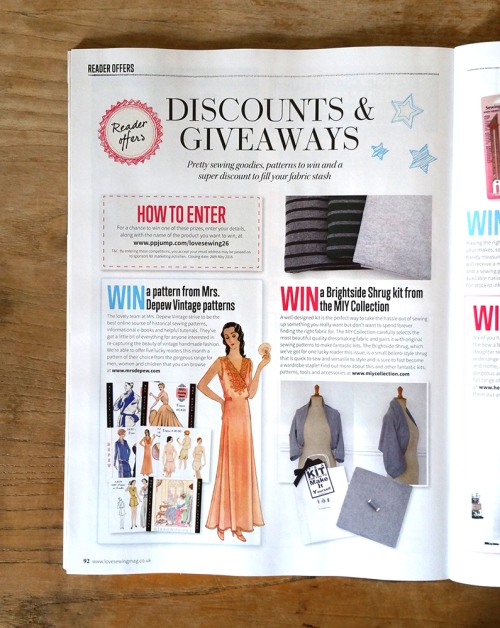
To celebrate, you can win one of my Brightside Shrug Making Kits which includes gorgeous grey marl lightweight cotton loopback sweatshirt fabric, matching thread and pattern. The perfect garment for this time of year when it can still be a bit chilly, but you don’t want a big bulky jumper or cardi.
You can enter the giveaway online here. Good luck!
Once you’ve done that, settle down with your copy of the mag and a brew and read my Q&A; this month “Do I really Need To Tack?” Erm, what do you think my answer was?! I’m also answering questions on ease and when’s a good time to start having a go at pattern cutting.
It’s issue 26, it’s £5.99 and it’s out now.
What Is It Really Like To Work In The Fashion Industry?
For my Q&A in this month’s Love Sewing magazine I interviewed Helen Self to find out more about the real nitty gritty of working in the UK high street fashion industry.
I know Helen from my time in industry – she was my boss in my first industry job that I started in 1998. I won her round with my excellent tea-making skills and she gave me a brilliant grounding in how to apply the skills I was learning at university to real-world work.
Here’s the full unedited interview with Helen:
Dressmaking is a great way to get unique clothes that are exactly what you want, that fit you well and without the worry of seeing everyone else wearing the same thing. We all know that it’s also an enjoyable and productive way to spend our time, that’s why we’re all reading Love Sewing, right?! Dressmaking also provides the perfect outlet to express your creativity and inner fashionista, but what about if you start thinking about doing it for a job?
The world of fashion appears from the outside to be full of glamour, excitement, travel and creativity and can be a tempting career direction for young people just starting out in the world of work as well as frustrated creatives trapped in offices looking for a career change.
The fashion industry is an important part of the UK’s economy; providing jobs and representing £26bn to the UK economy in 2014 (source: https://www.fashionunited.co.uk/facts-and-figures-in-the-uk-fashion-industry). It’s a hugely diverse industry employing creative, technical, business, marketing and logistical skills and creating everything from beautifully crafted couture garments to school uniforms and everything in between. Fashion training in the UK has one of the best reputations in the world and we have produced internationally successful designers such as Alexander McQueen, Vivienne Westwood and Paul Smith, not to mention the renowned work that goes on in Savile Row.
To get a behind the scenes peep at just one part of this vast industry I approached Helen Self; a designer who has spent almost 30 years in the industry designing for a wide range of companies to find out how she got started, how she works and what a typical working day is like for her.
 No, she doesn’t spend everyday with Chewbacca!!
No, she doesn’t spend everyday with Chewbacca!!
Wendy: What’s your current job title?
Helen: I am the design manager at Blues Clothing Ltd with a team of 13! It’s quite a task at times but very rewarding – I have some amazing designers that I work with. We’re a manufacturer of licensed products and our biggest are Peppa Pig, Disney and Thomas the Tank Engine! We’ve got around 49 licenses and we create and supply kids’, adults’ and baby clothing using the licensed branding. I have been with the company 5 years and we manufacture out of China, India , Sri Lanka and Turkey. We supply all of the supermarkets and most of the high street.
W: How long have you worked in the fashion industry?
H: I have been in the industry for 29 years – I started before I had left college as a permanent work placement 3 days a week for a manufacturer called Scruffs. They used to have a concession in Top Shop. This was unheard of on my course as it was only a 2 year course and work experience was 2 weeks. I must have done a good job on my placement as they extended my stay and I was paid and given free clothes, which was all pretty amazing for me as a student.
W: What was your first job in industry?
H: My first job after leaving college in 1988 was as a design room assistant for an underwear manufacturer called Clintextiles. I spent most of my time making tea, cutting out samples and tracing patterns for factories. This industry is so small; a friend I made at this job is now the course leader at my old college!
W: Where and what did you study?
H: I studied a BTEC certificate in fashion for 2 years at Cleveland college of art after leaving school then a 2 year Higher Diploma in Fashion at Medway College of Design Rochester (which is now part of UCA – The University for the Creative Arts). I don’t have a degree – experience was valued much more back in the day! I trained as a designer and pattern cutter. Pattern cutting was taught the manual way of flat pattern cutting on paper and French modelling on stands, very different to the electronic systems now used in industry training.
W: Can you remember when you were first interested in clothes?
H: My mum would say since I was a toddler. I’ve always been interested in clothes for as long as I can remember.
W: Where have you worked during your career?
H: Oh my goodness I’ve worked all over! I started in London in the ‘rag trade’ – fast fashion produced in Europe and the UK. I worked for various companies around the west end of London for 10 years before working for an M& S supplier. I then moved to the midlands and worked for retailer Adams Children’s wear for 5 years. After this I took a temp job in Hong Kong for Next sourcing as a product developer; this was a bit of a change of direction but proved to be an amazing experience. I frequently went to China to the factory to work with the sample unit and visited suppliers’ show rooms in Hong Kong to develop garments, denim washes and effects.
When I moved back to London I worked for an Indian supplier; again an amazing experience as I travelled regularly to Delhi to develop garments with factories and source fabrics and prints. I then moved on to help set up a fair trade company producing clothing from Mauritius. I think this was one of the most rewarding roles I have had. I worked with factories direct, advising and teaching them various things from pattern cutting skills that they didn’t have to better quality control to help them understand the U.K. Market. One of the most memorable factories I worked with was Craft Aid; a fair trade factory that have an amazing work ethic and empower their local community by providing training and jobs in the garment industry. This role gave me the opportunity to travel to Mauritius several times and also become involved with one of the churches out there. I was privileged to be taken to visit some of the schools that the project were working with and see for myself the difference the work made to peoples’ lives.
My current role with Blues Clothing is completely different from any job I’ve ever had and at first it felt quite odd watching kids TV in meetings and going to licensing shows and meeting the “characters”! At my first Brand Licensing Europe show I was knocked over by a banana in pyjama! It was surreal, I love it though and I am everyone’s favourite auntie for all toddlers; they get quite excited when they see picture of me with their heroes!!
W: What has been your proudest moment as a designer?
H: I’m not sure I enjoy the moment of each job at the time as each job brings different moments of feeling proud. When I worked for the M& S supplier, Desmond & Sons I felt really proud seeing my designs in store, also that was something my parents ‘got’ and they were really proud of me; my dad used to go into our local M&S and tell them what I’d designed! Working with the factories in Mauritius was amazing as I taught them valuable new skills enabled them to increase their quality control expectations.
W: Has there been a project that’s been your favourite to work on?
H: Probably working with the factories in Maurituis . It was such a different experience and I felt that I was really helping and making a difference to peoples’ lives.
W: What do you enjoy most about being a fashion designer?
H: Seeing my designs and those of my team of designers being worn by kids. It still gives me a thrill and I still point them out to whoever is with me!
W: What do you enjoy least?
H: The chopping and changing of designs to get things into price points, it’s a necessary but unfortunate side of the business
W: Tell us about a typical working day for you.
H: Each day is very different. I deal with any issues my designers have, meet with licensors (people who own the brands we work with). Attend lots of design development meetings and constantly research new ways to move on our products.
W: Do you sew?
H: No – I don’t have the patience!
W: What is the process you go through to design a new garment?
H: Myself and my team research print ideas and trends in techniques, colours and shapes. We go “development shopping” twice a year to Europe or the USA to see what’s happening look for any new ideas coming through. We also keep an eye on what’s happening through online sources. Once we have our ideas we create a mood boards and colour palettes and then we get started designing.
W: What would you like to do if you weren’t a fashion designer?
H: Own a puppy day school – it’s my retirement dream!
W: Is working in the fashion industry as glamorous as people think?
H: No it’s not. Travel sounds glamorous, but being stuck in a factory with no air con at 35 degrees heat is no fun! Even the shopping isn’t very glam as the pressure is on to find the ideas which usually involves 9 hours solid shopping, blisters and a sore back! Whilst I wouldn’t necessarily describe my work as glamorous, I am very privileged to travel and see parts of the world others wouldn’t necessarily be able to.
W: What advice would you give to someone thinking about a career in the fashion industry?
H:
- Go to college, use your initiative and get some work experience.
- Always be professional on work placements as this can lead on to your first job.
- Go for graduate roles where possible, all experience is good, remember – we can’t all be Vivienne Westwood!
- Look at the whole industry, there are opportunities world wide not just in the UK.
- Make sure you enjoy what you do; this is a hard and competitive industry, but it can be rewarding and offer lots of opportunities if you are willing to work hard.
- Finally, it’s a surprisingly small industry, everyone knows each other so always be professional and make a good impression.
A huge thank you to Helen for taking time out of her hectic schedule to allow us to have a nosey into her world.
If you’d like to find out more about the fashion industry here are some useful links to get you started:
http://www.thecreativeindustries.co.uk
http://www.designcouncil.org.uk
http://www.ukft.org/index.php – the UK Fashion & Textile Association
http://www.ethicalfashionforum.com
Craft Aid – the fair trade project that Helen worked with in Mauritius: http://www.craftaid.net








